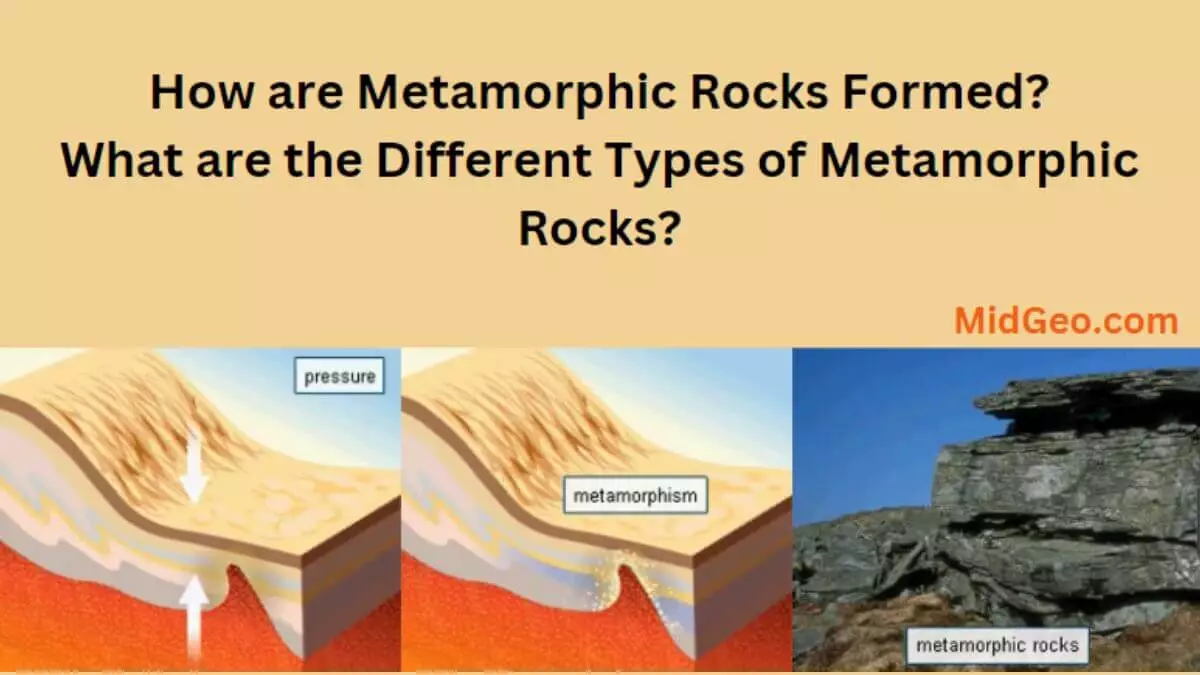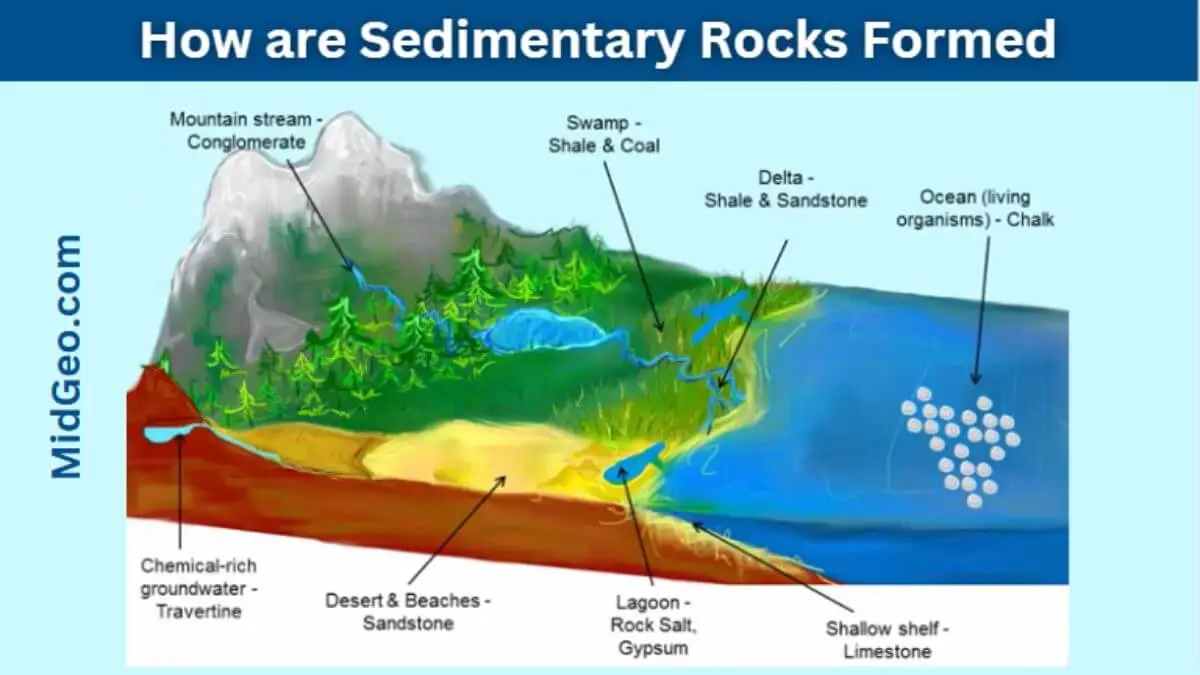How are Metamorphic Rocks Formed? Types

Metamorphic rocks are formed through the transformation of existing rocks through intense heat and pressure, without melting the rock. These processes result in a change in the physical and chemical properties of the rocks, leading to the formation of new rocks.
In this article, we will explore How are Metamorphic Rocks Formed? and the different types of metamorphic rocks, and some related question answers.
Read Also: How are Sedimentary Rocks Formed: Understanding the Formation Process
What are Metamorphic Rocks?
Content Summery
Metamorphic rocks are rocks that have undergone a process of transformation under intense heat and pressure, without melting the rock. This process results in changes in the mineralogy, texture, and chemical composition of the original rock, leading to the formation of a new type of rock.
How are Metamorphic Rocks Formed?
Metamorphic rocks are formed when existing rocks are subjected to intense heat and pressure. These conditions cause the minerals in the rocks to change their structure, leading to the formation of new minerals or the recrystallization of existing minerals. The heat and pressure can be caused by tectonic movements, the burial of rocks in sediment, or the intrusion of hot magma.

What are the Different Types of Metamorphic Rocks?
There are two main types of metamorphic rocks: foliated and non-foliated. Foliated rocks have a layered or banded appearance due to the alignment of minerals during the metamorphic process, while non-foliated rocks do not have a layered appearance.
The Processes Involved in the Formation of Metamorphic Rocks
Heat
Heat is a major factor in the formation of metamorphic rocks. As rocks are subjected to high temperatures, the minerals within them undergo changes in structure, leading to the formation of new minerals or the recrystallization of existing minerals. The heat can be generated by tectonic movements, the burial of rocks in sediment, or the intrusion of hot magma.
Pressure
Pressure is another key factor in the formation of metamorphic rocks. As rocks are subjected to high pressures, the minerals within them are forced to rearrange themselves, leading to the formation of new minerals or the recrystallization of existing minerals. Pressure can be caused by tectonic movements or the weight of overlying rocks.
Time
The transformation of rocks into metamorphic rocks is a slow process that takes place over millions of years. The longer the rocks are subjected to heat and pressure, the more pronounced the changes will be.
Fluids
Fluids such as water can also play a role in the formation of metamorphic rocks. Water can help to transport minerals and facilitate chemical reactions that lead to the formation of new minerals.
- World Environment Day 2024: Only One Earth | Date, Theme,and Significance
- List 10 Importance of Geography In the World
- Relative vs. Absolute Location | Definition & Examples
- What is a Beach? How Are Beaches Formed?
- List of Landforms A to Z on Earth
Types of Metamorphic Rocks
- Foliated Rocks: Foliated rocks have a layered or banded appearance due to the alignment of minerals during the metamorphic process. The alignment of minerals is a result of the directional pressure exerted on the rocks. Examples of foliated rocks include slate, phyllite, schist, and gneiss.
- Non-Foliated Rocks: Non-foliated rocks do not have a layered or banded appearance. Instead, they have a uniform texture and are typically composed of one mineral. Examples of non-foliated rocks include marble and quartzite.
FAQs: How are Metamorphic Rocks Formed?
What is the difference between metamorphic and igneous rocks?
Metamorphic rocks are formed when pre-existing rocks are subjected to heat and pressure, causing them to change their composition, texture, and mineralogy. Igneous rocks, on the other hand, are formed when molten rock, or magma, solidifies and cools either on the Earth’s surface or within the Earth’s crust. The main difference between metamorphic and igneous rocks is the way they are formed, with metamorphic rocks being formed through the process of metamorphism and igneous rocks being formed through the process of solidification and cooling of magma or lava.
Can any rock be transformed into a metamorphic rock?
Most rocks have the potential to be transformed into metamorphic rocks if they are subjected to the right conditions of heat and pressure.
How are foliated rocks different from non-foliated rocks?
Foliated rocks have a layered or banded appearance due to the alignment of minerals during the metamorphic process, while non-foliated rocks do not have a layered appearance and are typically composed of one mineral.
What are some examples of foliated rocks?
Some examples of foliated rocks include slate, phyllite, schist, and gneiss.
What are some examples of non-foliated rocks?
Some examples of non-foliated rocks include marble and quartzite.
Metamorphic rocks are formed through the transformation of existing rocks through intense heat and pressure, without melting the rock. The processes involved in the formation of metamorphic rocks include heat, pressure, time, and fluids. There are two main types of metamorphic rocks: foliated and non-foliated.




